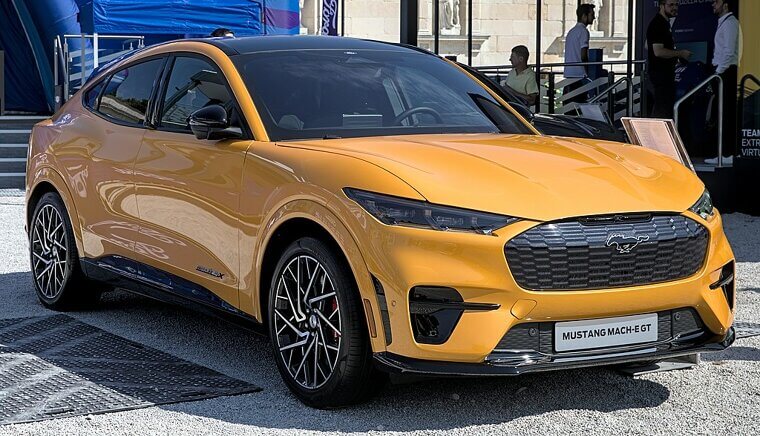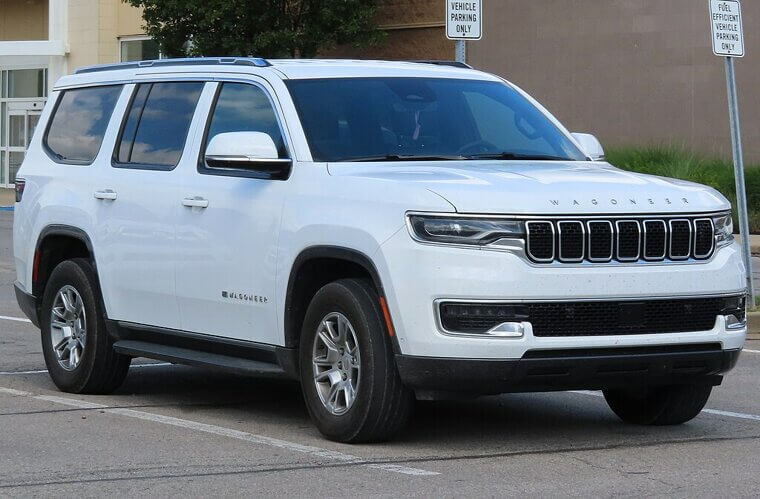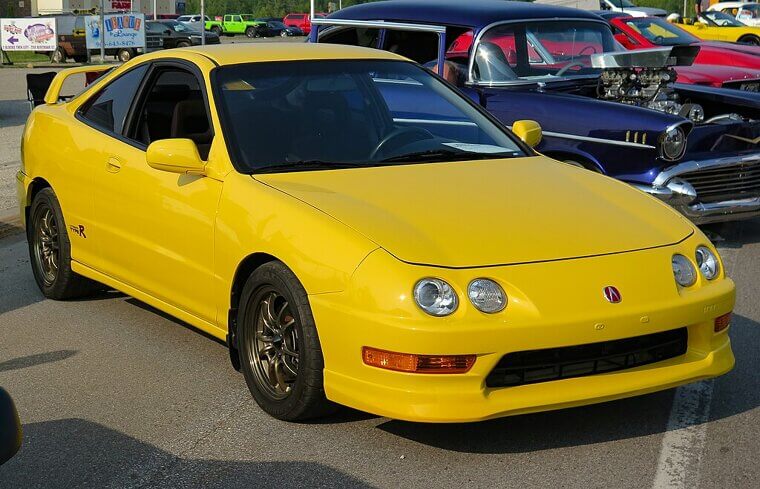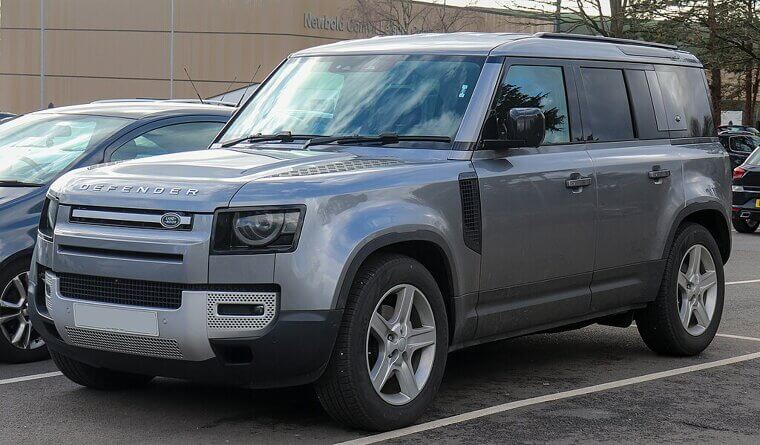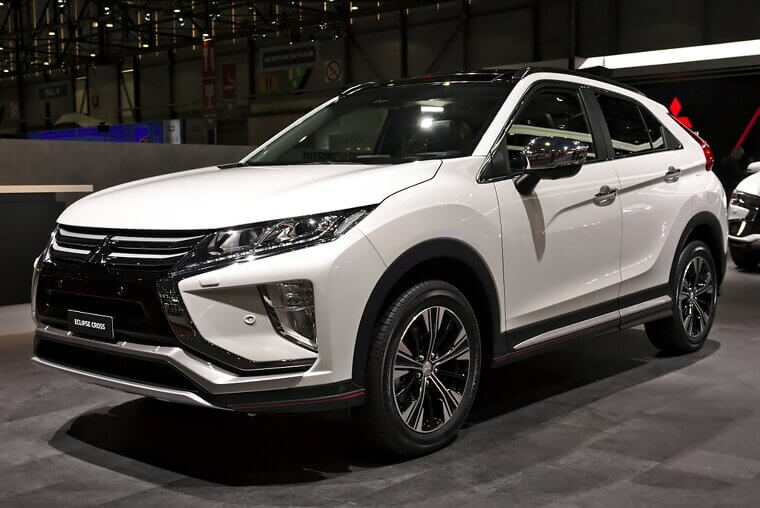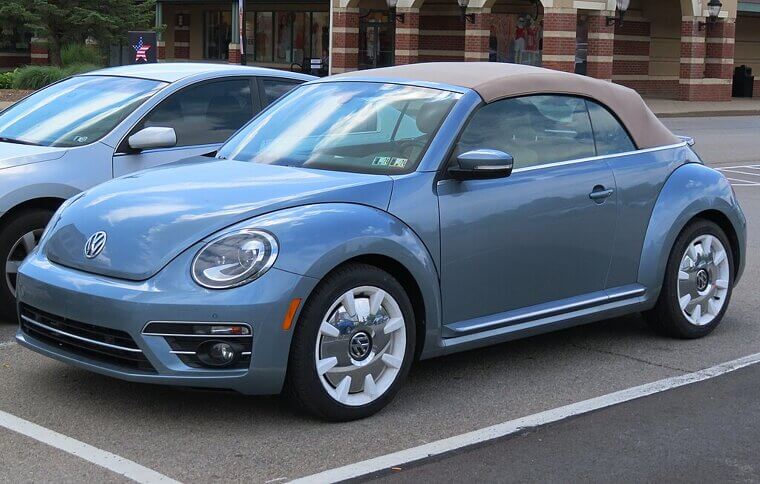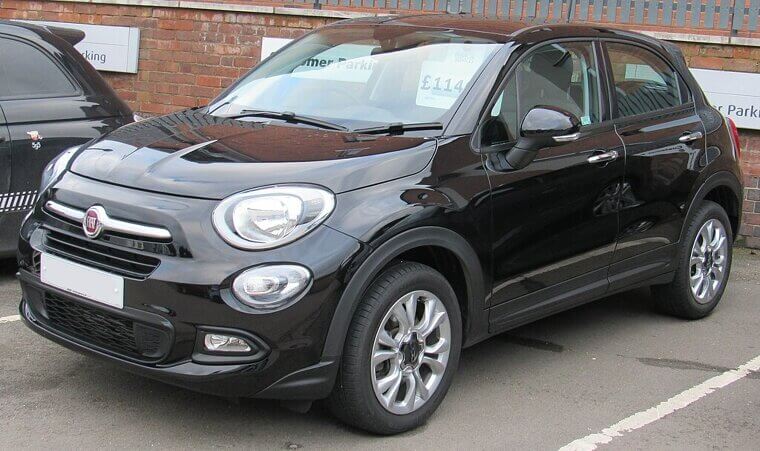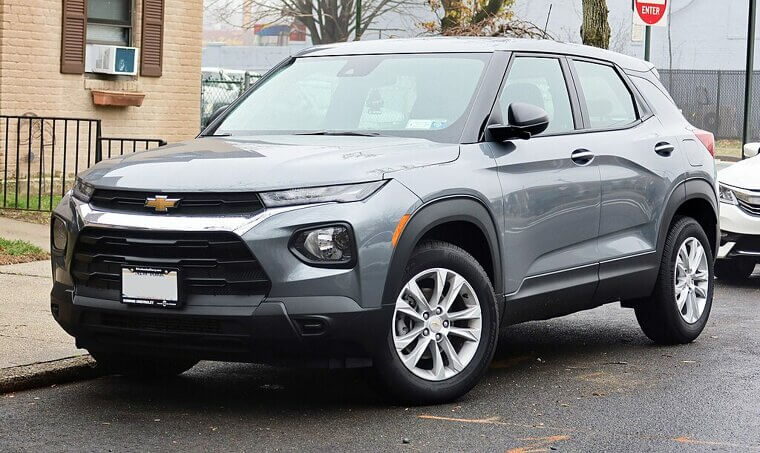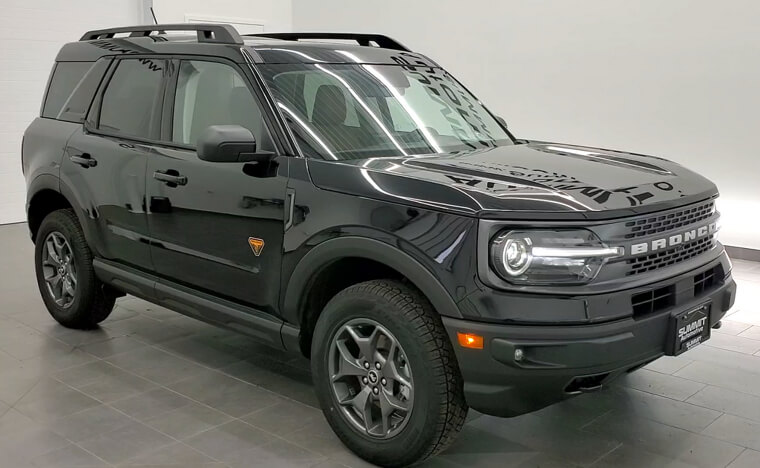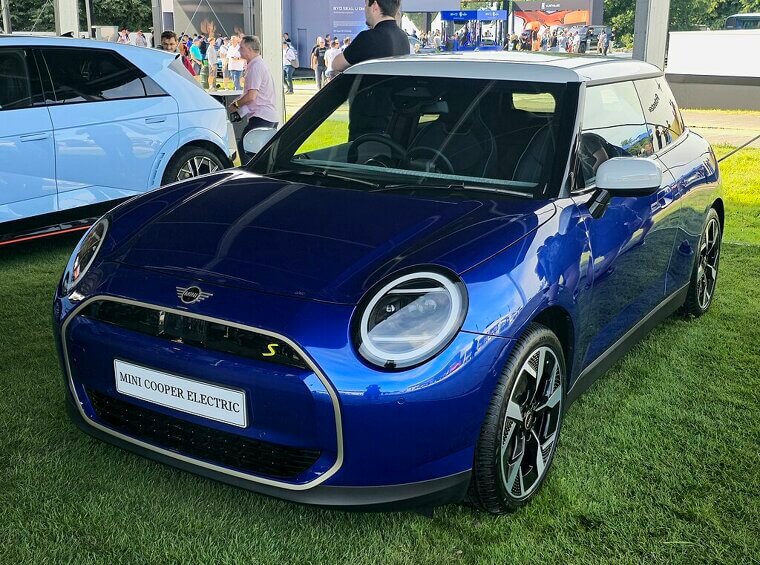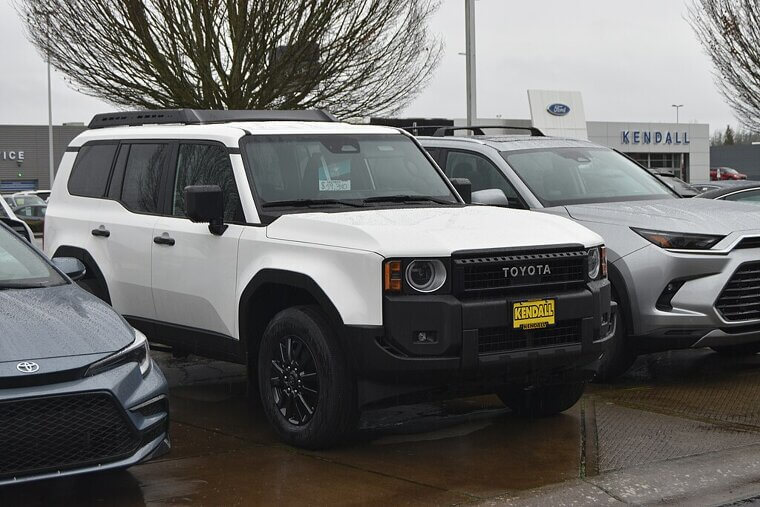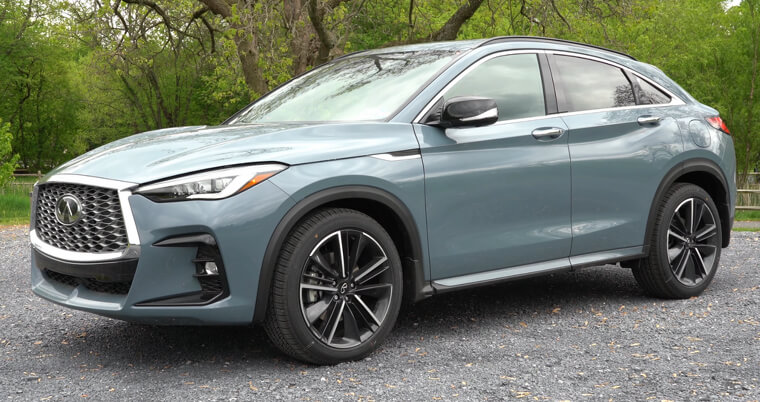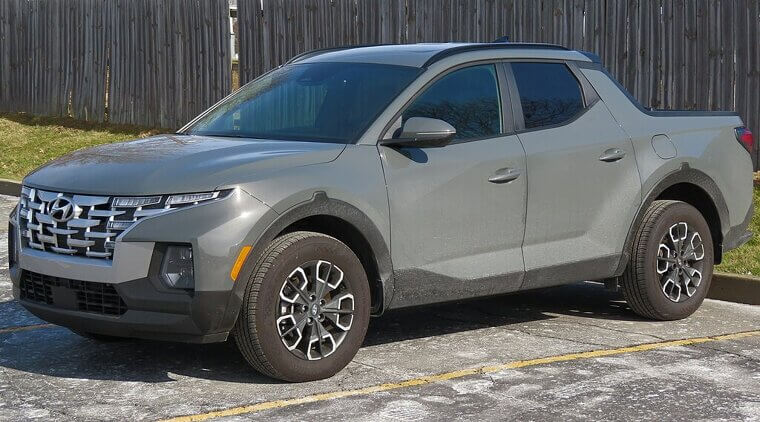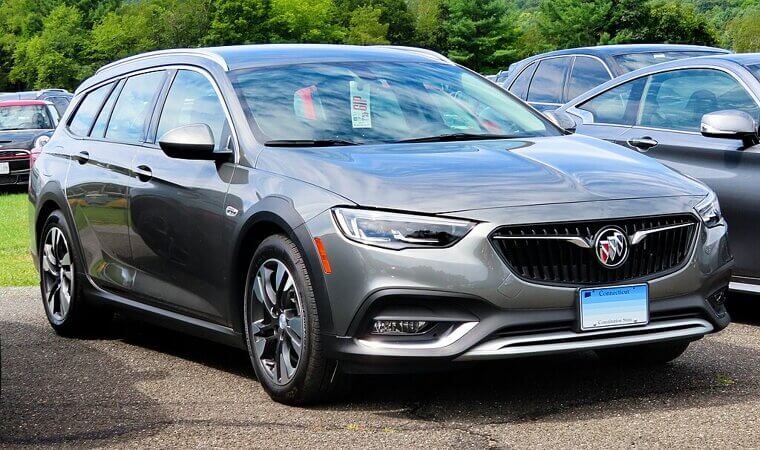Not Every Comeback Is a Good One
Car brands often bring back established names, hoping to leverage the nostalgia and bring the model roaring into the modern world. However, sometimes they arrive with more of a whimper, like these wet blankets.
Ford Mustang Mach-E (2021)
The name Mustang evokes the classic muscle car era, when vehicles were lean, mean and faster than greased lightning. The Mustang Mach-E was an electric crossover SUV. That’s practically heresy to Mustang purists, and while it wasn’t a bad EV, many felt it soiled the Mustang’s legacy.
Chevrolet Blazer (2019)
The Blazer was once a rugged off-roader, and the new model in 2019 was a Camaro-inspired crossover with none of the wild, adventurous spirit of the original. It had no 4x4, no off-road potential and instead of roaring in the wilderness, it whispered quietly at the back of the crowd.
Jeep Wagoneer (2022)
Comparing the original Wagoneer to the 2022 return is very much a case of comparing night and day. The original was utilitarian and classy, while its predecessor tried too hard to bring the luxury - and on account of its screen-filled, glitchy tech interior, it failed.
Toyota Supra (2020)
The BMW-branded, Toyota-built 2020 Supra had to live up to the MKIV Supra’s “Fast & Furious” legacy, and while it was good, it didn’t reach the same heights. Modders didn’t like its initial customization difficulty, while enthusiasts felt it was more BMW in a Toyota cosplay than a return to Supra glory.
Acura Integra (2023)
The Integra reboot was fine, but considering the icon that the original was, that’s just not good enough for enthusiasts. To begin with, the base model came with a bland continuously variable transmission (CVT) and under the surface it drove like a Civic Si with a price tag hike.
Land Rover Defender (2020)
When you consider why the OG Defender was so beloved - it was rugged, rough and you could fix it yourself with basic tools - you can’t wave away the disappointed sighs of 2020. The main reason was the tech upgrades, which took manual repair off the table for sterile gadgets; not ideal when you’re in the backwoods.
Nissan Z (2023)
What fans hoped would be a revolution turned into a reskinned 370Z from 2009, which in terms of sports cars is ancient. There were no major modernizations, no upgrades to weight or performance, just more of the same; that applies to the interior too. The only difference was the inflated price.
Mitsubishi Eclipse Cross (2018)
Enthusiasts knew the Eclipse as a tuner cult classic, but the one Mitsubishi rebooted wasn’t even recognizable. Much to the horror of fans, it was a compact crossover with wishy-washy performance and the addition of a grating CVT. Its odd rear styling and quirky proportions were a step back, too.
Volkswagen Beetle Final Edition (2019)
The Beetle was given a lackluster sendoff with the 2019 “Final Edition” version, which didn’t feature many changes at all beyond the badge and trim. Without performance or style enhancements, it felt more like VW was quietly sweeping its once-legendary series under the rug.
Hummer EV (2022)
The first Hummer was basically the environment’s public enemy number one, so it did need some changes. However, this reboot took it too far the other way by turning it into a massive - and we mean massive - EV (which also had comparatively poor efficiency) with a price that made wallets sweat nervously.
Fiat 500X (2016)
While the original 500 was a fun ride with a big reputation, the 2016 500X just seemed to be wearing the OG’s face as a mask. Its performance was boring at best (and bouncy at worst) while the interior was cheap and awkward. It managed to miss the mark with both Fiat and Jeep enthusiasts.
Chevrolet Trailblazer (2021)
In an attempt to recapture Trailblazer fans Chevy missed the mark again on this one, turning a midsize SUV with off-road chops into a small crossover with a weedy 1.3L three-cylinder engine that couldn’t blaze a trail with a flamethrower. It looked kind of sporty, but didn’t deliver.
Honda Passport (2019)
Honda took its Pilot and added a new trim to create the Passport reboot, forsaking any innovations. It’s not that it was bad - it was reliable and practical - but didn’t excite or do anything to stand out from the crowd; plus it fell short of the rugged image Honda marketed.
Ford Bronco Sport (2021)
As a decent crossover the Bronco Sport hit the mark, but as a continuation of the Bronco line it couldn’t live up to expectations. Fans expected off-road power and brawn, but they got a tinker toy equivalent sharing the Ford Escape platform.
Mini Cooper SE Electric (2020)
Let’s be honest, the SE Electric was small and cute, but when it comes to EVs it could barely be taken seriously - it had enough juice for city jaunts, and that was its limit. With no innovations on the EV platform and a lack of practicality, you were paying over the odds for a premium badge.
Toyota Land Cruiser (2024)
Some people appreciated the Land Cruiser’s return, which brought a smaller, simpler vehicle to the market. However, purists were just confused: why should this budget model replace the luxurious and burly, V8-powered 200 series? The decision was divisive, to say the least.
Subaru WRX (2022)
The 2022 WRX was as fast and fun as the previous version, but the tiny bump in power came at the cost of aesthetics. The reboot ditched its predecessor’s aggressive look for weird plastic body cladding that looked like cheap bumper armor, while its slight tech upgrades left enthusiasts unfulfilled.
Infiniti QX55 (2022)
Infiniti wanted to bring the QX50 into the modern era with the QX55, but instead of making true innovations, they sloped the roofline (which only served to reduce interior space) and kept dated tech under the new body. The inclusion of CVT was a particular head scratcher.
Hyundai Santa Cruz (2022)
The 2022 Santa Cruz was a neat concept, but failed in application… at almost every turn. It was marketed as an “adventure vehicle” but came with a small truck bed, lackluster hauling and towing power. It also had little to none off-road cred!
Buick Regal TourX (2018)
The Regal TourX wasn’t actually a disappointment in terms of performance - it was a great Euro-style wagon - but it was a letdown in terms popularity and marketing. Americans wanted SUVs and crossovers, so they ignored it; and because Buick barely promoted it, few knew it existed. It was sadly discontinued after two years.


